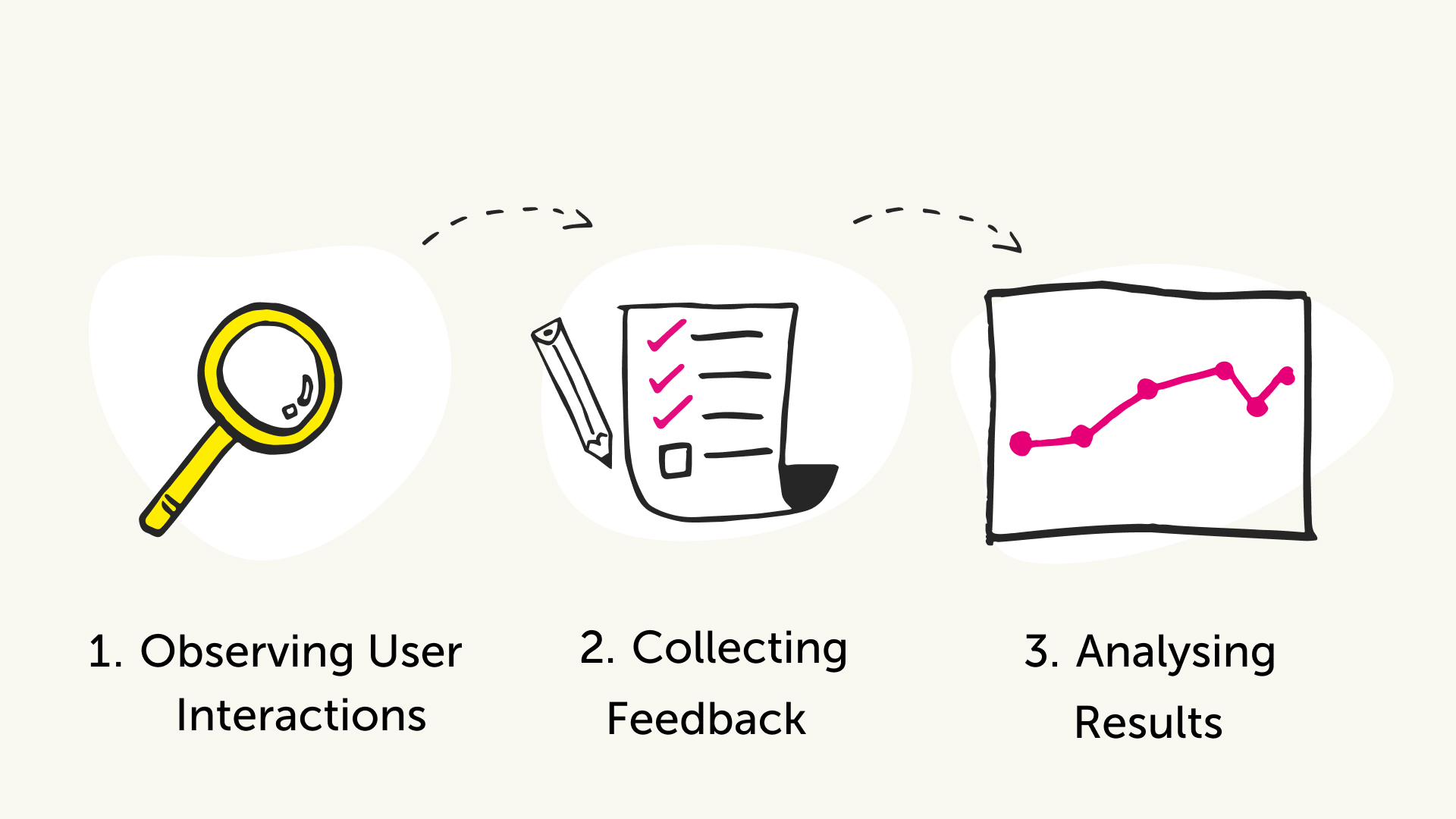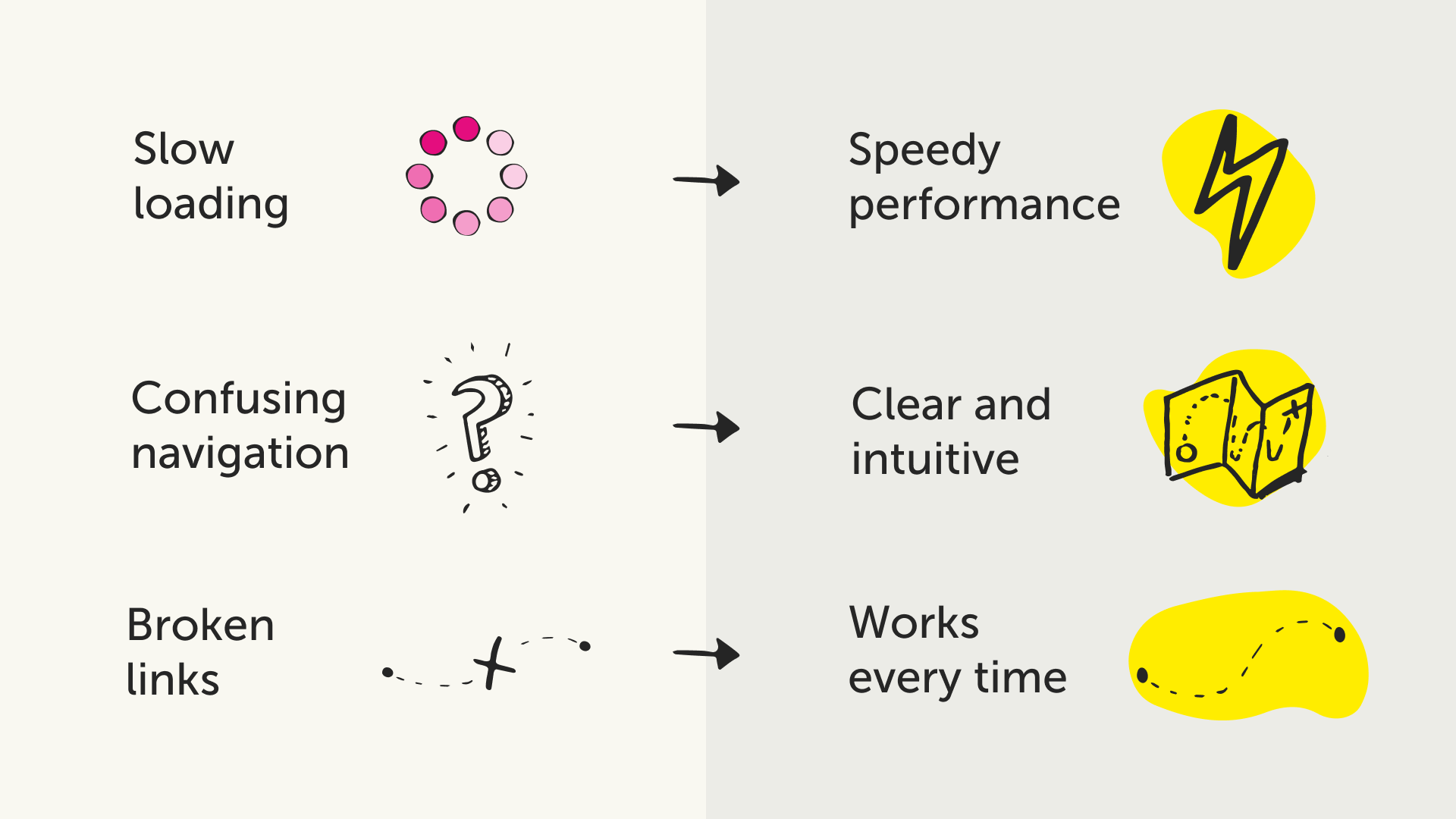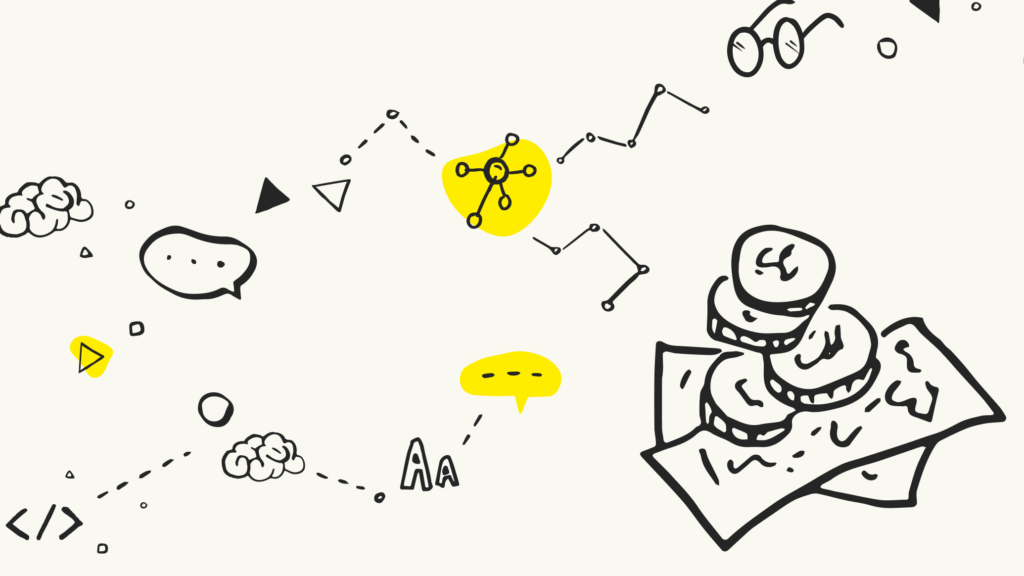
If user centricity is not your core focus, your visually appealing digital product is destined to flop. User experience (UX) has become the cornerstone of successful design, so usability testing with your target audience is an essential tool in your toolbox.
We’re delving into the many benefits of usability testing and its fundamental role in human-centred design. We’ll explore:
- what usability testing is
- why it’s important
- different methods
- the benefits
- understanding usability
- how to choose the right prototype
- active participation
- the strategic importance of timing and investment
What is usability testing and why is it important?
Usability testing is a method practitioners use to uncover key issues and problems with a product’s usability. Does it work as it should? Do users understand what is being asked of them? Can they navigate from A to B? It usually involves a facilitator prompting a participant to openly discuss what they’re doing and how they’re feeling whilst interacting with an interface. This could be task based, open interaction or navigational testing.
At its core, UX design is about creating products that not only look good but also provide a seamless experience for users. Usability testing ensures that a final product aligns with user expectations and needs.
Poor user experience can seriously weaken a website, which can result in lost opportunities. From complex navigation structures to accessibility challenges, usability testing serves as a powerful tool to enhance the overall UX design. This results in websites that deliver a seamless and positive experience for users.
Methods of usability testing and when to use them
The two main types of usability testing are moderated and unmoderated, which is basically whether a facilitator is there at the time of the session or not. Sessions can be in-person or remote, depending on the needs of your project.
Usability testing encompasses various methods, each serving a unique purpose. Moderated testing involves a facilitator guiding participants through tasks, providing valuable insights into user behaviour in real-time.
Unmoderated testing allows participants to navigate a prototype independently, providing unbiased feedback. They may be prompted during the session using pre-written questions, or be given instructions from a practitioner before beginning the session.
The choice between these methods depends on factors such as project timelines, budget constraints, and the depth of insights required to inform design decision making.

Benefits of usability testing
Usability testing takes design from good to exceptional by helping identify user pain points and areas for improvement early on.
Involving users during the early stages gives designers valuable insight into how useful a product is in the real world, which leads to more intuitive, user-friendly interfaces. Uncovering potential challenges a user faces early means teams can mitigate user frustrations, reducing the need for post-launch modifications which can be costly.
Usability testing should be conducted throughout your product’s development lifecycle as a way of iterating your designs. And doing it post-launch supports continuous improvement of your product. Streamlining workflows and interactions optimises task flows and allows users to accomplish goals more efficiently. Ultimately, this means increased productivity and a more enjoyable user experience.
Other benefits include increased user satisfaction, higher conversion rates, and the establishment of a competitive edge.
Understanding usability and its relevance to user experience
Usability refers to the ease with which users can interact with a product or system to achieve their goals effectively and efficiently. It’s a critical component of the overall user experience. A usable product is one that people can navigate effortlessly, minimising frustration and maximising user satisfaction. Usability varies for everyone and is dependent on context and types of users.
Designers often create products for people with different levels of digital knowledge, with varying cultural backgrounds and accessibility requirements. They have to factor in the use of language, colour and other visual elements that make an interface feel familiar, relevant, and accessible to all users.
A product is used in a variety of environments, which has a huge influence on its overall usability. Imagine trying to use a mobile app on a crowded train versus in a quiet office space – usability design concepts should take this into account and adapt designs to cover all scenarios.
Choosing the right prototype
The success of usability testing hinges on selecting the right prototype. Whether it’s a low-fidelity wireframe or a high-fidelity interactive prototype, the choice depends on the testing goals and the stage of the design process. Fidelity in prototyping refers to the level of detail and realism used to represent the look and feel of the final product.
Low-fidelity prototypes are ideal for testing broad concepts earlier on. These are often created with paper, wireframes, or basic mock-ups, and provide designers with quick and flexible options for exploring and iterating on design concepts. These prototypes prioritise core functionality and overall user experience over visual details.
High-fidelity prototypes offer a more realistic user experience for detailed evaluations. These tend to be highly detailed and closely resemble a final product. They’re typically used in the later stages of the design process when the core functionality and user experience have been validated and refined.
Addressing issues in usability testing
No matter how experienced a practitioner may be, issues still arise and addressing them promptly is crucial. Common challenges include biased facilitation, inadequate participant recruitment, and the misinterpretation of research results. To help with these issues, it’s essential to establish clear testing objectives, use standardised metrics, and involve diverse participants to ensure comprehensive feedback.
Biased facilitation can be avoided with thorough preparation before interviews. Teams will have agreed on research objectives and a discussion guide, with lines of questioning that meet your objectives and prevent veering off topic or asking leading questions.
When recruiting participants, you want to ensure that you have written a comprehensive screener which will be used to find people who meet your criteria. This should include a spread of people who represent your end users to get a comprehensive sample. Your insights will be more credible when you have spoken with a diverse pool of participants, especially if your research and design team are not very diverse.
Finally, the results of your testing sessions must be accurate and depict both the behaviours and motivations of each of your participants. You must have a clear and consistent method for analysing your insights, using standardised metrics to identify key themes.

Engaging participants
The success of usability testing is dependent on active participation from both research participants and facilitators. Engage participants by creating a comfortable testing environment, encouraging honest feedback, and considering their diverse perspectives.
Facilitators play a vital role in guiding participants through tasks, asking relevant questions, and extracting meaningful insights without leading them down a more desired path and therefore biasing results.
The importance of strategic timing
The cost of delaying usability testing can be substantial. Identifying and rectifying design flaws early in the process saves both time and money.
Strategic timing for investing in usability testing means engaging with users at key milestones in the design process, ensuring feedback informs decision-making before irreversible development happens. Investing in usability testing upfront is an investment in long-term success.
The concept of UX debt can be intentional or unintentional but can be equally detrimental to your product team in the long-term. Intentional debt occurs when time or scope pressures force compromises within teams, resulting in suboptimal products. In doing so product teams accept UX debt, intending to address usability issues in later development sprints.
Unintentional debt arises from more systemic issues, such as a lack of end-user input via usability testing. These factors can lead to guesswork and the gradual accumulation of UX debt over time.
It’s well proven that usability testing is a vital aspect of effective UX design. By identifying issues early, selecting the right prototype, employing diverse testing methods, and involving participants and facilitators actively, designers can create products that not only meet but exceed user expectations. The strategic timing and investment in usability testing are not just practical decisions; they ensure the success of digital products with user-centric design that stands the test of time.
How can we help?
Although we’ve briefly touched on moderated and unmoderated testing, choosing the right usability testing method is crucial to align with your specific goals, and time and budget constraints. Want to explore more about these methods and how they can benefit your project? Visit our Usability Testing services page on how we can help you more, or contact us to speak with one of our consultants.
We drive commercial value for our clients by creating experiences that engage and delight the people they touch.
Email us:
hello@nomensa.com
Call us:
+44 (0) 117 929 7333




